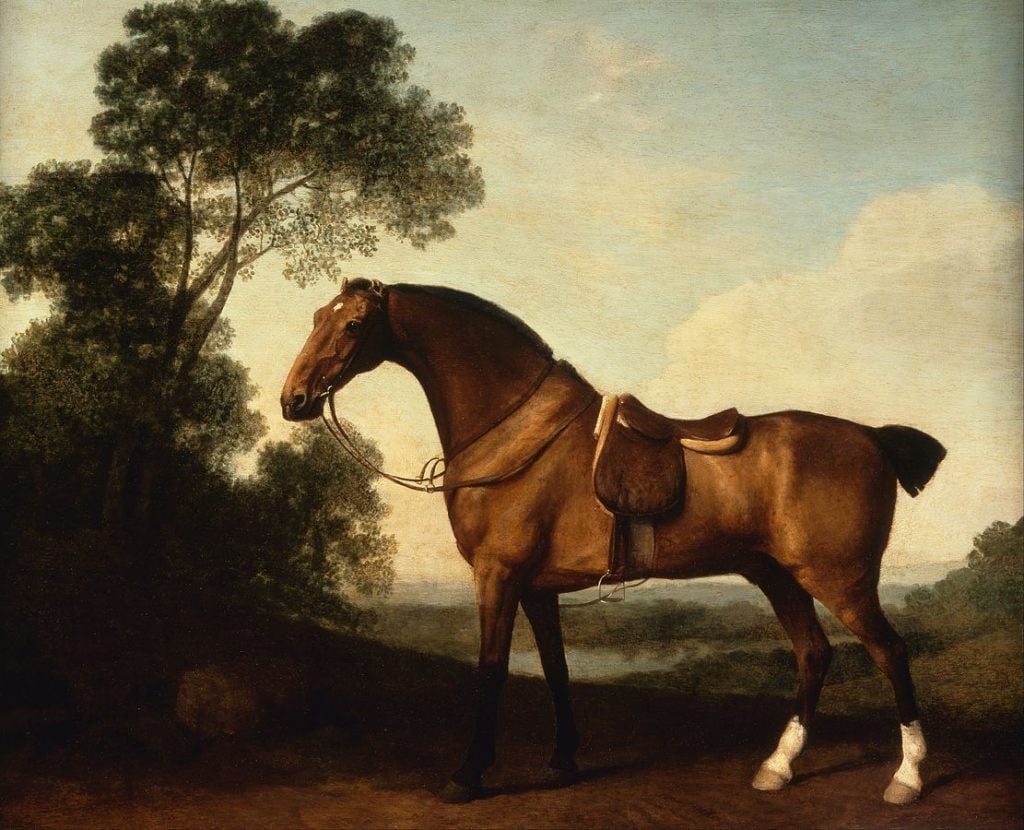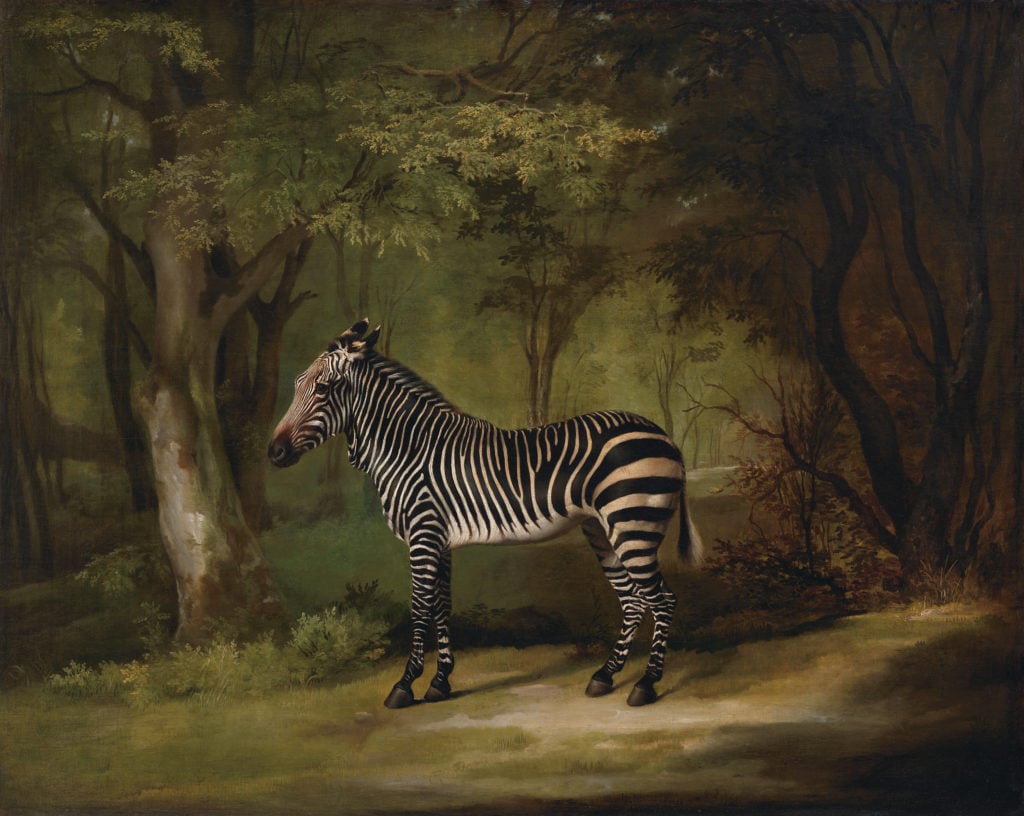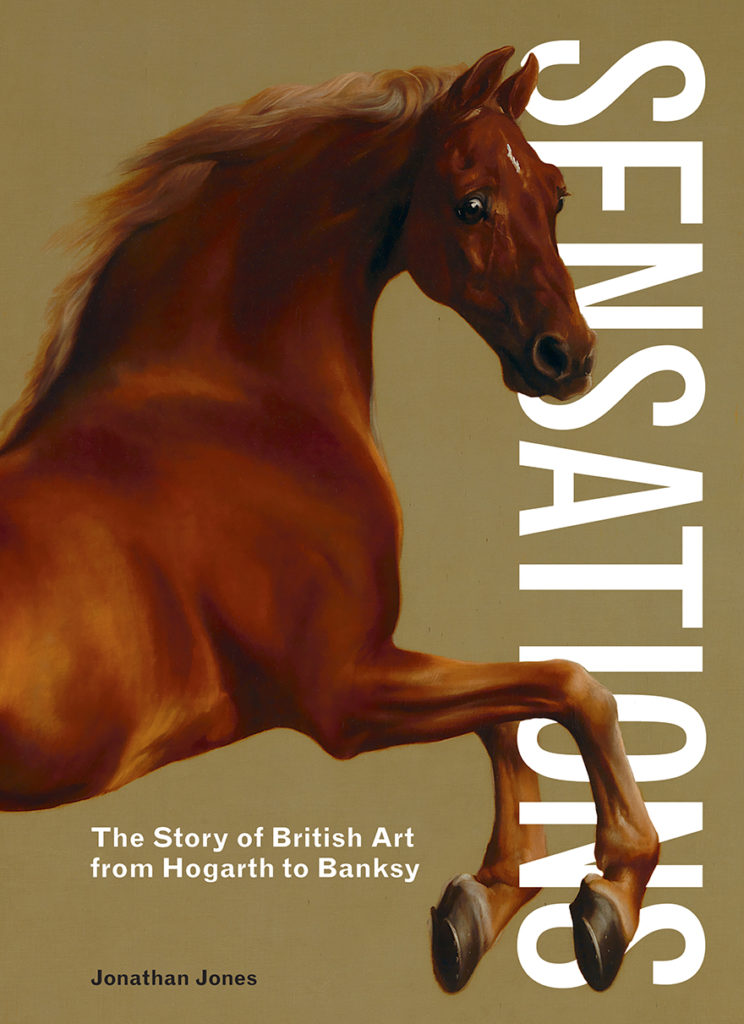Art World
‘He Was Learning About Life by Studying the Dead’: The Ghastly Secret Behind Artist George Stubbs’s Beloved Paintings of Horses
Warning: this gets a little gruesome.

Warning: this gets a little gruesome.

Jonathan Jones

He began by slitting their throats. That was not only the quickest way but the best for his purpose, because it killed without leaving marks. Blood jutted out of the jugular vein and they fell. Then he had to inject the arteries and veins with wax, as he had learned to do at the hospital. The strangest and most exhausting part of it all, however, was the suspension of the body. For this he devised a sort of machine. He suspended an iron bar from the ceiling with hooks hanging from it, and below that slung a wooden platform for their feet. Once he somehow stood them on the platform, with Mary helping as best she could, the hooks were applied to hold them upright in a surprisingly elegant, even statuesque pose.
Then he flayed them.
The work took 18 months, and for that whole time George Stubbs and his partner Mary Spencer lived in a rented farmhouse near the village of Horkstow in Lincolnshire, undisturbed and isolated in their dreadful work. It was the turning point of his life, a bloody rite of passage that changed him forever.
He dissected about 12 horses altogether. With a preliminary analysis of a boiled-down skeleton out of the way, he proceeded methodically to investigate every part of equine anatomy. First he exposed one by one every layer of the muscles that cover the abdomen, cutting deeper and deeper until he reached the lungs and intestines. The stinking bowels “were taken out, & Cast away.” Next he stripped the skin from the head before gradually exposing the muscles of an entire body.
It was, for all its strangeness, research of real scientific value. Yet Stubbs was not a surgeon or a veterinarian. He was a painter. Born in Liverpool in 1724, the son of a leather currier, he was one of many young talents competing for attention in the energetic British Georgian art world. What on earth drove him to embark on a slightly sinister experiment in the depths of the countryside, slinging up carcasses with his hooks and chains, cutting into them by lamplight in the loneliness of the Lincolnshire night to the hoot of an owl, for all the world like an early sketch for Mary Shelley’s Frankenstein?

George Stubbs, The Zebra (1763). Yale Centre for British
Art, New Haven.
His aim was to understand nature exactly, in order to paint it with precision. Early in his career this enigmatic, single-minded artist fell out with a Liverpool painter who was giving him lessons. The young Stubbs—he later told a friend—swore then that he “would for the future look into Nature for himself and consult and study her only.” Few artists have ever taken that aspiration quite so literally. Stubbs challenged himself to understand the nature of horses better than any previous artist, from the inside out. His plan was to publish a book of engravings that would unveil equine anatomy more completely and exactly than any previous study. The drawings that survive from his strenuous enterprise reveal that he looked as deeply as he cut. One remarkable analysis resembles a ghost horse materializing on an empty page. Tendons and muscles in the horse’s neck and legs are painstakingly detailed, their tangled stillness revealing how perfectly his wax injections have frozen them in place. Yet even as he coolly and carefully observes each taut sinew and expansive muscle, he also notices the closed eye of the horse with a tender compassion for this beautiful creature. Its empty rib cage is pale and spectral, and at the same time a structure of awe-inspiring perfection. Stubbs exposes and sees the complexity of nature, the intricacy of a single animal.

The cover of Jonathan Jones’s new book Sensations: The Story of British Art from Hogarth to Banksy.
Then he draws it again. Some sheets record the bones of the horse with a translucent, almost digital precision. He shows the skeleton from all sides, exploiting the empty space between the bones to look straight through this majestic cage from front, back and side and see its internal structure in a three-dimensional perspective. In another drawing the horse at first sight appears intact and alive: on closer inspection you see that it has been flayed and what we are looking at is the outer surface of the muscles covering its internal organs. Why does he once again make it seem almost ghostly?
Stubbs is not just being sentimental. He is trying to learn about life by studying the dead. His aim is to comprehend in complete internal detail how a living horse is constituted. Always, he keeps that ultimate purpose of understanding living animals in mind as he draws dead ones. Yet it is bloody work. The muscles that cover the horse begin to be stripped away. In the next drawing the tendons of the neck are exposed. No illusions about this creature being alive. Its ribs protrude through its skinned flank. Then he cuts away more flesh, to see another layer of muscles. More arteries appear. At last there are just bits of dark nerves and tendons stuck to bare bones.
He draws this entire process from three angles—with the horse facing him and its body turned to the right, with its rump facing him and the body similarly turned, and as a simple side view. The gradual removal of each layer of the horse’s muscles can be seen from each of these perspectives. Put them all together and you have a complete three-dimensional picture of the structure of an animal.
Eventually, in 1766, Stubbs published his eye-opening book The Anatomy of the Horse. Yet its superb engravings are just a small part of what his dissection gave him. Knowing horses from the inside made him an unrivaled painter of their outsides. From the late 1750s onwards it seems he must have portrayed every thoroughbred horse in the country. One landowner after another commissioned him to paint stallions, foals and mares. No wonder, for his paintings exhibit the empirical exactness only anatomy can give them. He often paints them standing quite still, posed like specimens. We seem to see into them. Their muscles and nerves pulse under the skin. Stubbs paints the horse as a scientific wonder in his frozen, isolated portraits of animals whose anatomical exactitude makes them more real than the folk who ride them. In his c.1756 painting Grimcrack with John Pratt up at Newmarket, a race horse poses with the same somber dignity he saw in his flayed, eviscerated horses. Gimcrack is perfectly preserved in paint, his body a dark sleek fact under the Newmarket sky. We see him with wonder through the eyes of Stubbs, a master of both art and science.
Excerpted from SENSATIONS: The Story of British Art from Hogarth to Banksy by Jonathan Jones. Copyright © 2019 by Jonathan Jones. Excerpted by permission of Laurence King Publishing Ltd. All rights reserved. No part of this excerpt may be reproduced or reprinted without permission in writing from the publisher.